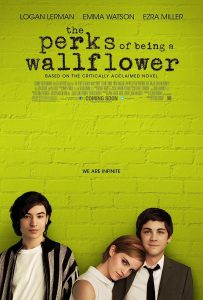What to Read Next: Register Forum Editors’ Picks
October 8, 2018
The Old Man Who Read Love Stories by Luis Sepúlveda
What: This short read tells the story of Antonio José Bolivar, an old man living alone in an Ecuadorian jungle after the death of his lover. He faces heartache, solitude, cultural conflicts, and the vicious wild.
Why: Most text about love are often cliché, making you feel the same ways and think the same things. But this book is truly so distinct from any other, absorbing you into a story that isn’t quite fantastical, but one which you would never have imagined.
Citizen: An American Lyric by Claudia Rankine
What: This book-length poem (one which you’ve probably read excerpts from in class) can seem intimidating for many reasons. However, it is well worth it, addressing modern racism in America in such a beautiful way, even to a poetry-despiser like me.
Why: Citizen is undeniably a difficult text and not one to read casually while walking to soccer practice. It requires you to reread and understand. Nonetheless, reading this is simply so important—and there’s no other way to describe it. She writes of microaggressions, violence, sports, and every existing cross-section.
– Sun-Jung Yum ’19
White Teeth by Zadie Smith
What: Smith’s novel is written from the perspective of multiple different Londoners living in the later 20th century. The characters range from a white, middle-aged man, to his black, 20-year-old wife, to their Muslim family friends.
Why: Smith is the kind of writer that makes you think no other writers should even write because they could never live up to her prowess. She’s articulate, exciting, and expertly humorous in a way that most good writers—caught up in the drama and depression of their stories—fail to be.
“Up, Simba” by David Foster Wallace
What: A long, long essay by the late, great David Foster Wallace about John McCain and his run for president in 2000. The essay is one of many included in Consider the Lobster, a collection of some of Wallace’s best.
Why: Following McCain’s death this past August, “Up, Simba” is a deep dive into the character of the politician, the world in which he worked, and the morals he lived by. The essay is about McCain, but it goes much deeper than just his existence; it touches on modern politics, hope, and the power of believing in something.
– Cecilia Barron ’19
News of the World by Paulette Jiles
What: Set at the close of the Civil War, this book follows Captain Jefferson Kyle Kidd, whose life is solitary until he meets Johanna, a 10-year-old orphan. This is a poignant story about the relationship between an old man and a determined girl who couldn’t come from more different backgrounds.
Why: The book provides a perspective of the harshness of assimilation, as well as a more nuanced understanding of relations between Native Americans and white Americans in the mid-19th century.
Between the World and Me by Ta-Nehisi Coates
What: Between the World and Me is a profound and beautifully written letter from former Atlantic writer Ta-Nehisi Coates to his son, Samori Coates, about being a black man in America. Coates writes in ways that are both deeply personal and a reckoning of broad and ingrained elements of our society.
Why: Every page of Between the World and Me is a gem. Unlike the authors of many books, Coates is not trying to cater to the readers; instead we are invested observers of an intimate moment between father and son. Toni Morrison says it all: “This [book] is required reading.”
– Isabelle Agee-Jacobson ’20
Homegoing by Yaa Gyasi
What: Starting in 18th century Ghana, Homegoing follows the paths of two half sisters, who are unaware of each other, and their descendants through eight generations. From the Gold Coast to Jazz Age Harlem, Gyasi tells a story of slavery and its repercussions, comparing those who were sent to the U.S. to those who stayed in Ghana.
Why: Homegoing is a work of beautiful storytelling, written in vignettes that focus on each descendant in their own story. The character development is phenomenal, considering that each character only gets such a short chapter.
The Photo Ark by Joel Sartore
What: The Photo Ark is a collection of over 400 portraits of the beautiful species that Earth holds. Arranged beautifully, the photos compliment and contrast each other in a way that makes the viewer feel a connection with the animals on the page.
Why: Joel Sartore set out on a mission in 2005 to photograph every one of the world’s 12,000-plus captive species—species under human care all over the world—before he dies. This book is not just a book of animal portraits- it’s a call for the world to be aware of the extreme loss of biodiversity our planet is experiencing.
– Vera Targoff ’19












